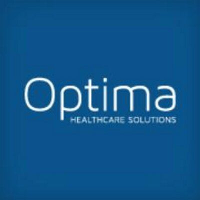 Point of Service Documentation (First of a 2-part series), By Mahta Mirhosseini, Therapy Resource
Point of Service Documentation (First of a 2-part series), By Mahta Mirhosseini, Therapy Resource
Traditionally, therapists have approached treatments and documentation in a compartmentalized fashion; a hands-on treatment session was provided, then documentation was done after the session was over, often times at the end of the day. With increasing use of technology and EMR software in healthcare, you may be hearing more talk about Point of Service documentation in our therapy settings. Some therapists wonder whether POS documentation can be done effectively, or if it may take quality treatment time away from patient care. Here, we discuss how POS charting can be an effective adjunct to the therapeutic process when it is done correctly.
- Think of when you were in your therapy school, did you wait till class was over to take notes? It is very similar to our therapy sessions. When you document during treatment, you can ensure that your documents are more accurate and detailed. POS documentation helps to include details that may otherwise be forgotten by end of the day.
- Do you find yourself overwhelmed at the end of the day trying to complete all your evals, encounter notes, or recert documents? POS approach helps the clinician get documentation completed as they go on throughout the day, thereby reducing end of day documentation stress.
- Do you have lots of chicken scribble on your daily activity schedule when recording patient levels and measurements? Our field is driven by objective tests and measures. POS documentation allows therapists to take detailed notes while collecting data during the session, therefore establishing and advancing appropriate goals in real-time. In fact, using EMR for POS data collection may trigger the therapist to perform additional testing to ensure that all relevant areas are addressed.
- Do you worry that POS documentation may affect relationships and quality connections with our residents? Our patient population has been seeing their physicians and healthcare professionals take notes using technology. You might even say that they have come to expect to see their providers actively capture data. The key is to engage your patients in that process and find a balance of documenting data while fostering an active and engaged therapeutic session.
Optima‘s point of service documentation solution is called Point of Care (POC), and unlike its traditional desktop Optima counterpart, POC is designed with the treating therapist in mind. Many of our therapy programs have been reporting great success using Optima’s POC to render point of service documentation. Stay tuned for our next POS documentation post which highlights efficient documentation tools that exist only in Optima’s mobile POC. If you would like to get more information on these tools before the next post, please reach out to me or your local therapy resource.
